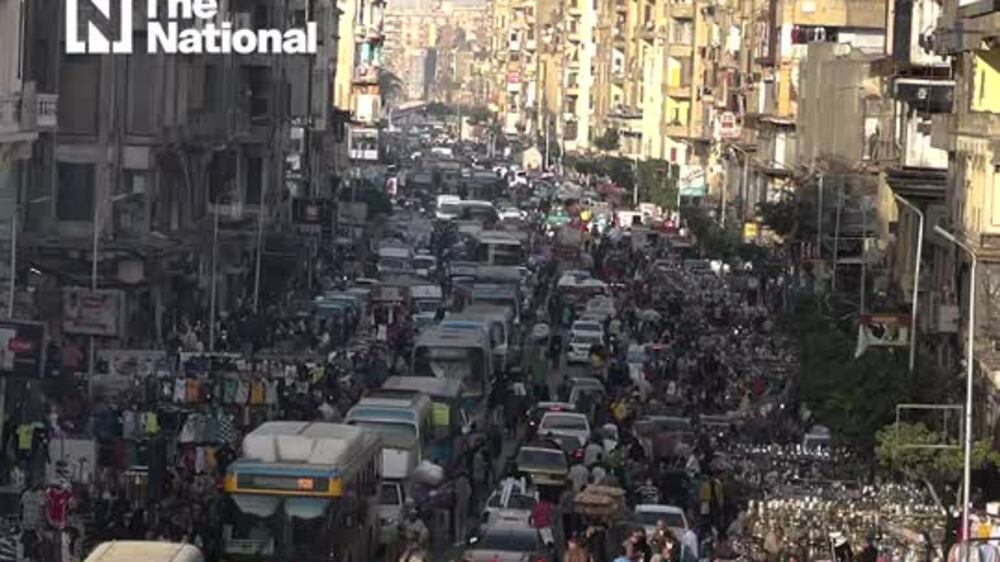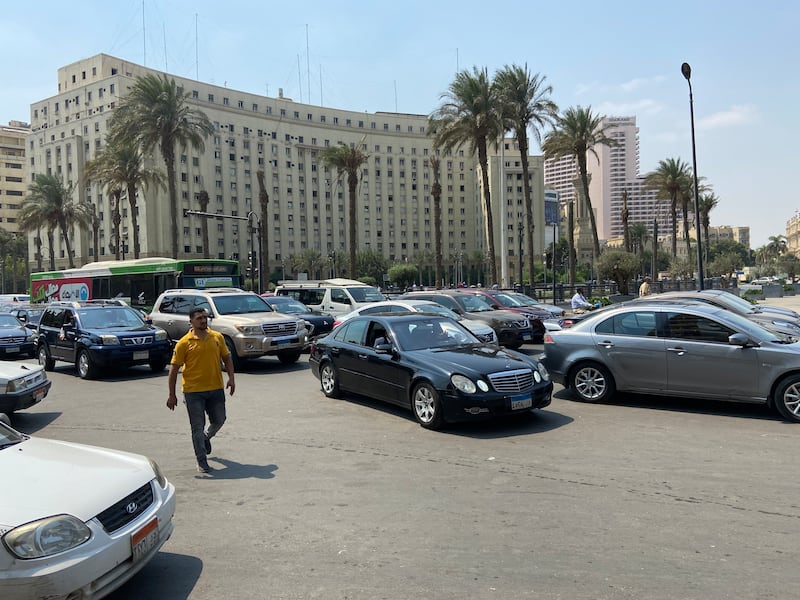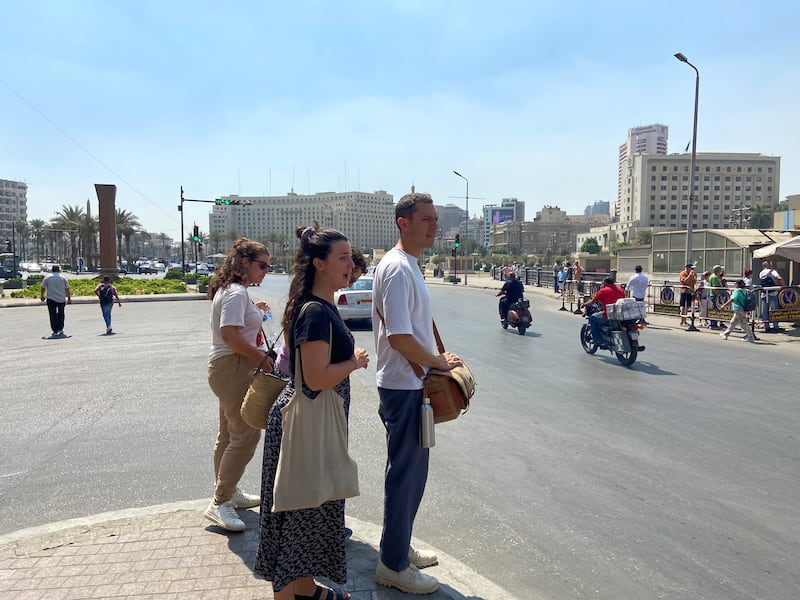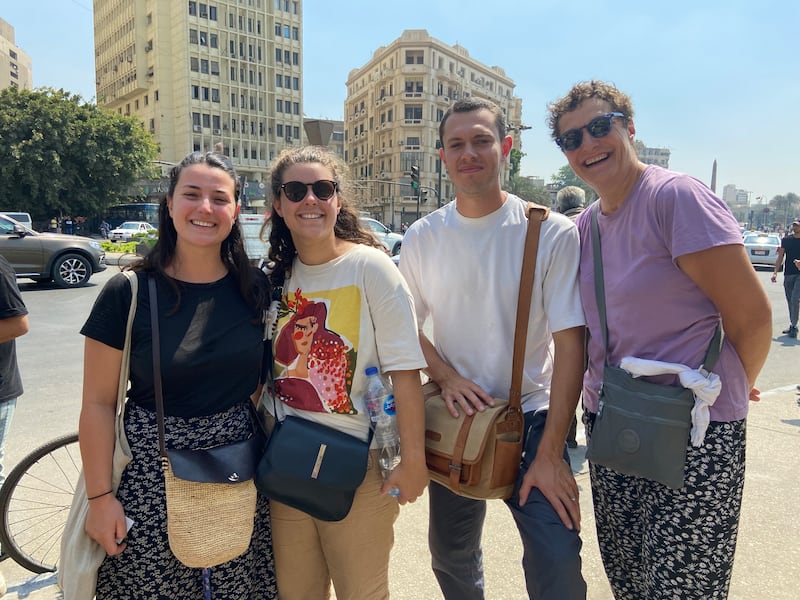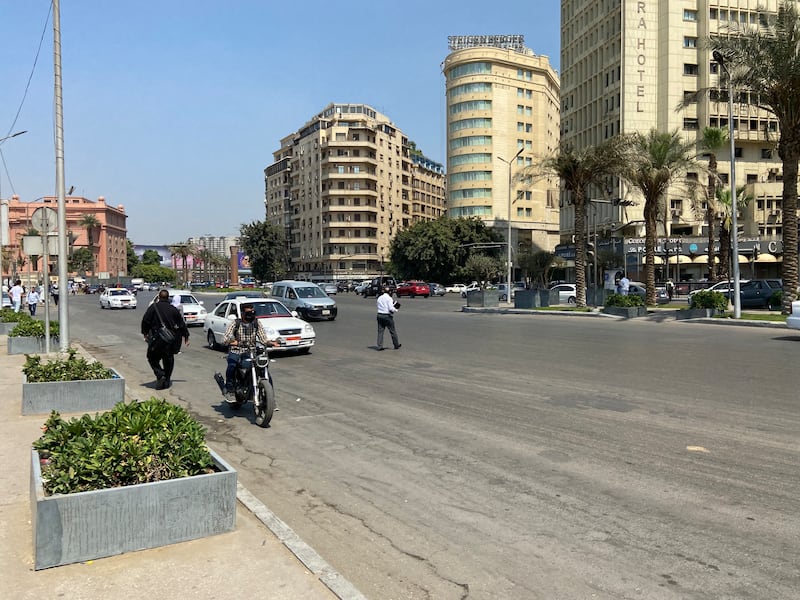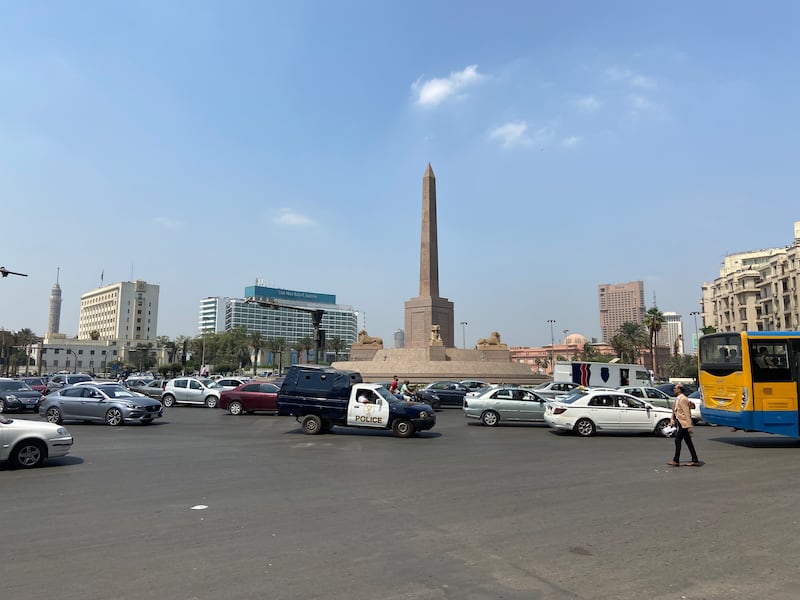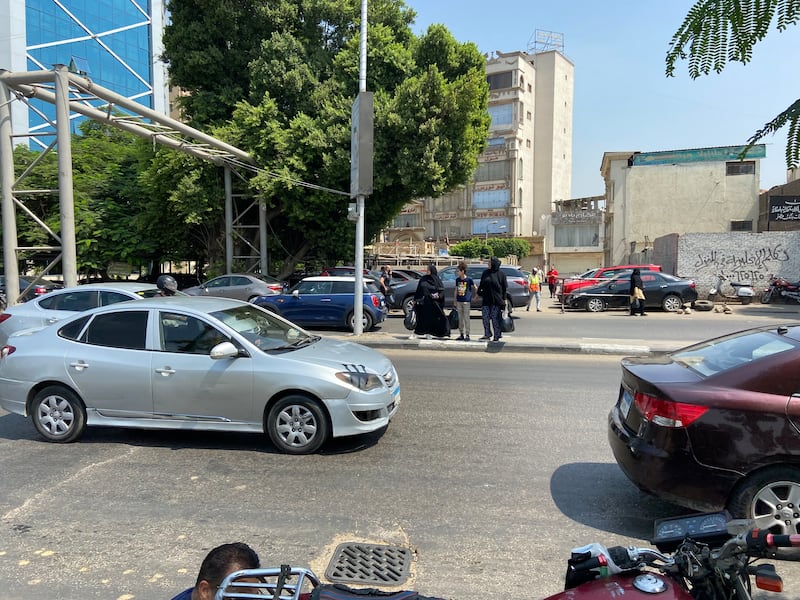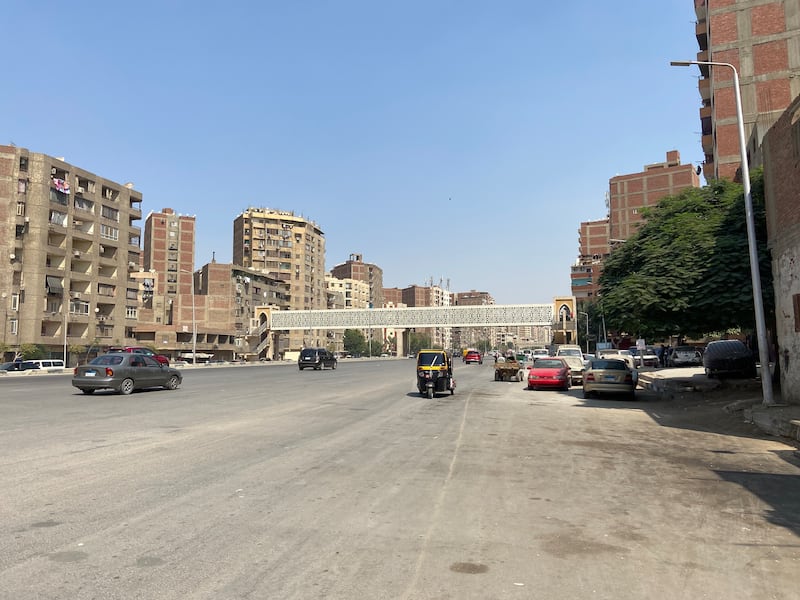
In central Cairo, cars, taxis, motorcycles and buses whizz around the Tahrir Square roundabout with the towering Ramses II obelisk at its centre.
The traffic spirals off in various directions: the Egyptian Museum, the old American University in Cairo campus, the Ramses train station and elsewhere, in this overcrowded metropolis of 23 million people.
Amazingly, pedestrians are in the middle of it all, interwoven in the chaos, walking to their jobs, catching their buses and peddling their goods.
No one waits for traffic to slow down to get where they need to be. There are no buttons to push and no “don’t walk” and “walk” signs to light up. The faded white lines of pedestrian crossings are barely visible and meaningless in any case, and the colours of traffic lights do not necessarily correlate with “go” or “stop”.
A family of four French tourists stand on the pavement, waiting for the right opportunity to cross the wide streets between them and the museum, before dashing across.
“When we saw some Egyptians, we followed behind them,” says Alexandra Bayle, 26.
She and her husband flanked her younger sister and mother for added protection.
“It’s like chaos, but organised. There are a lot of people, a lot of cars, a lot of noise, but everyone seems to fit. I don’t know how it’s possible,” she says.
Crossing the street in Cairo is an art, and Egyptians have mostly perfected it, for better or worse. When the unspoken system works, it is impressive, while at other times it is dangerous and sometimes deadly.
The country’s statistics agency says road accidents claimed the lives of more than 7,100 people last year and injured more than 51,500. About a quarter of injuries were recorded among pedestrians.
On a global level, Egypt has the ninth highest figure for deaths per million vehicles at 939, based on 2016 data collected by the World Bank.
Pedestrians made up 27 per cent of road deaths in the country, according to 2016 figures from the Ministry of Health.
Some say the perilous situation has been made worse by the expansion of roads and building of flyovers in recent years, meant to ease traffic.
Pedestrian bridges don’t solve the problem
In Heliopolis, about 15 kilometres north-east of Tahrir Square, a street that was once a few lanes wide is now six on each side like a motorway.
Traffic police have been removed and motorists are left to their own devices, which means it is not uncommon to see a tuk-tuk on the far side, travelling the opposite way of the traffic.
The government has built at least half a dozen elaborate pedestrian bridges above the road for people to cross, but many still use the old-fashioned way of dodging cars down below.
“People find it easier that way. They get lazy about climbing the stairs,” says Yehia El Sagheer, 42, one of the few pedestrians using a bridge.
“But the road has become very fast, which makes it more dangerous. When it was a smaller road, cars were going more slowly,” he says.
The installation of footbridges does not necessarily solve the problem, says urban researcher Yahia Shawkat.
Women may find pedestrian bridges in isolated areas unsafe and disabled people cannot access them if there are no lifts.
“The pedestrian bridge, from an engineering point of view, might alleviate the problem, but it also has to be seen from a social perspective, a gender perspective,” says Mr Shawkat, the co-founder of Cairo-based urban studies group 10Tooba.
“That’s why there’s always this advocacy for at-level pedestrian crossings where there’s a complete stop of cars, which is the traffic light.”
The expansion of inner city highways, the removal of traffic lights and the U-turns resulting in a “perpetual flow of vehicles” all put more pedestrians at risk, Mr Shawkat says.
“I know people who stop taxis, call Ubers, just to go on the other side of what used to be a boulevard with trees … to do their errands within their neighbourhood, because it’s just so impossible to cross.”

Cairo not a walkable city
The expansion of roads has also resulted in less green and walkable space in Cairo, and cyclist paths are nonexistent.
The government has tried to change that with the new Mamsha Ahl Misr, which means “Walk of the People of Egypt”, along the Nile. The first 1.8-kilometre segment of the promenade opened earlier this year, but some criticised the decision in July to charge 20 pounds ($1) per person as an entrance fee to the lower section on the riverbank, a prohibitive sum for many Egyptian families.
The housing ministry has said the fees will go towards maintenance and be limited to a certain area within the walkway.
Nevertheless, the walkway opens only at 9am, so it is not the place for early risers keen to go for a morning stroll. The newly installed bike racks stand empty and the freshly painted bike lanes, although they are accessible free-of-charge at street level, don’t seem to bear the marks of cycle tracks.
All in all, it is more of an entertainment destination, with cafes and boat rides, than part of a pedestrian’s daily life.
Despite Cairo not being a very walkable city, walking is unavoidable for most. Some shrug at the alleged dangers of navigating the streets by foot and find ways to adapt.
Back at Tahrir Square, an elderly man crossing the street puts out his cane in front of him to alert drivers to stop. A woman yells out “Ramses!” as she flails her arms to a passing minibus and clambers on board.
Some pedestrians use the “jog-stop-jog” method, while others slowly walk while calculating the exact moment they can pass to the front or back of a moving vehicle.
“It’s not a big deal,” says Seif Mohamed, 23. “But eye contact is a must.”
He did add that more underground underpasses would be nice, while his work colleague, Heba Hamdy, 23, chimed in, “and more traffic lights”.
